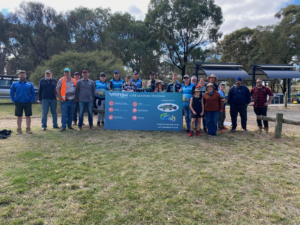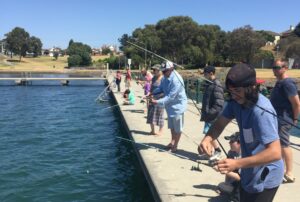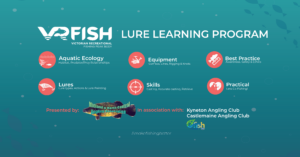October 20, 2015
The Nature Conservancy (TNC) is a leading conservation organisation working around the world to protect ecologically important lands and waters for nature and people.
Globally we work in more than 35 countries with a staff of nearly 4,000 including 600 scientists and engage in over 200 marine restoration projects. We began working in Australia in 2002 and since then we’re proud to have collaborated with a wide array of partners to support conservation efforts across more than 127 million hectares of Australia’s lands and waters.
Building on our global marine restoration experience, TNC Australia launched the Great Southern Seascapes Program in 2014, which aims to spark a revolution in marine conservation and the blue economy by scaling-up restoration of coastal habitats in bays and estuaries across Southern Australia. This will be underpinned by developing best practice restoration models, influencing policy, growing funding and inspiring and educating people.
TNC takes a collaborative, partner-driven approach to our projects and is looking forward to continuing to work closely with the recreational fishing community. Our restoration partnership in Port Phillip Bay is a great example of how we operate, with TNC, Fisheries Victoria, Albert Park Yachting and Angling Club and The University of Melbourne all working together on a three year science trial to work out how to bring back the lost shellfish reefs of the bay.

Oyster deployment March 2015
Shellfish reefs were once a dominant feature of seascapes across southern Australian bays and estuaries, but by the mid to late 20thcentury they had virtually disappeared. In fact, 85% of shellfish reefs have been lost worldwide, making it the most threatened habitat on earth.[1] Native oyster reefs and mussel beds are nature’s water filters and provide homes and food for a range of sea life including many important fish species – so that’s why we are so motivated to bring them back.
Our marine program work has quickly expanded to other southern states, with shellfish reef restoration partnerships formed in South Australia and Western Australia with the support of both states peak recreational fishing bodies.
Another project we have initiated in Victoria is Mapping Ocean Wealth, which also builds on TNC’s global work in this space. The objectives of the project are to develop context ready, local valuations of coastal ecosystem services (e.g. blue carbon, coastal protection, recreation/tourism, fisheries) for marine habitats (e.g. saltmarsh, mangrove, seagrass) and spatially represent this through an online mapping porthole. This information will assist in building robust business cases for marine restoration and better inform coastal development decisions.


Hobson Bay mussel deployment
It’s still early days in our practical in-water restoration works but as our projects progress there will be many opportunities for fisher involvement. We all depend on healthy marine habitats so it will take heavy lifting by everyone to help make sure there is plenty of fish in the future.
To find out more, please visit www.natureaustralia.org.au
- Beck, M.W et al. Shellfish Reefs at Risk: A Global Analysis of Problems and Solutions. The Nature Conservancy, Arlington VA. 52 pp.








